Jacob Palmer is back in this episode! He is the Safety Director here at Energy Weldfab and is in the studio to talk about the importance of wearing the proper clothes within a shop setting. More specifically, if you are welding or are around fires, you should wear cotton and never synthetic. In addition, your clothes should fit properly and not be baggy because this could lead to materials getting stuck inside of machinery or hindering your mobility.
There are many things covered within this short episode that you shouldn’t skip: from the perils of getting dressed without much thought, why hoodies are a huge no for some shop workers, Jacob's recommendations on shop-appropriate fabrics, strategically ordering the layers you wear, all the way to if you can (and should) wear hunting gear inside of your particular shop.
As a reminder though, this podcast is just a brief overview and done so for the purpose of bringing awareness. Consult a professional on the issue if you want a more in-depth overview of safety inside your shop.
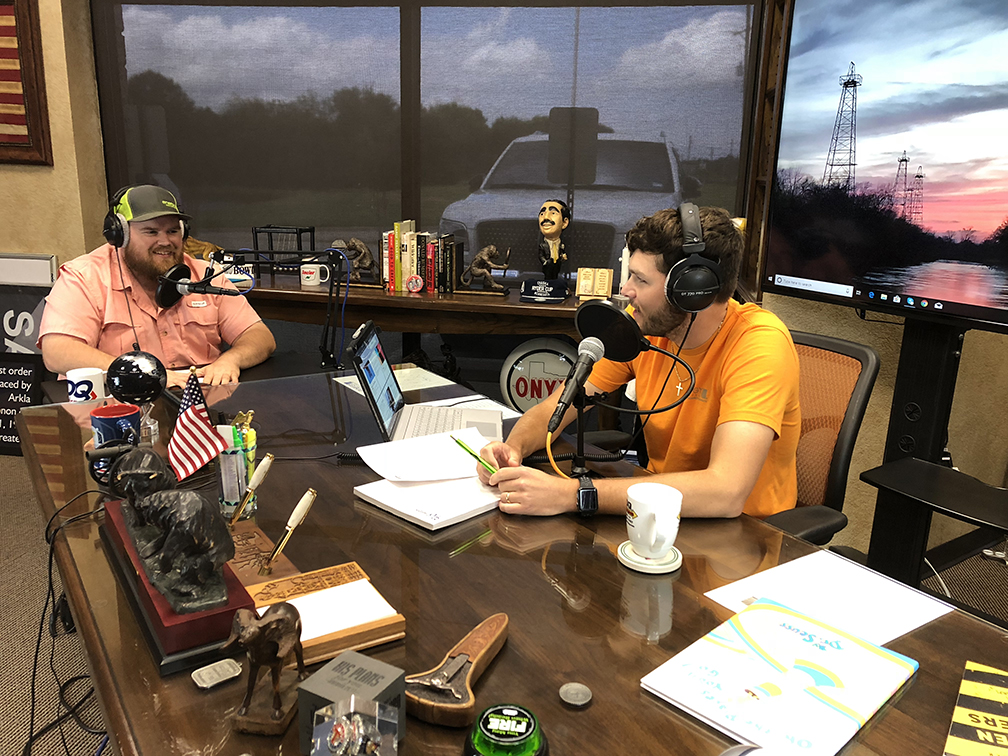
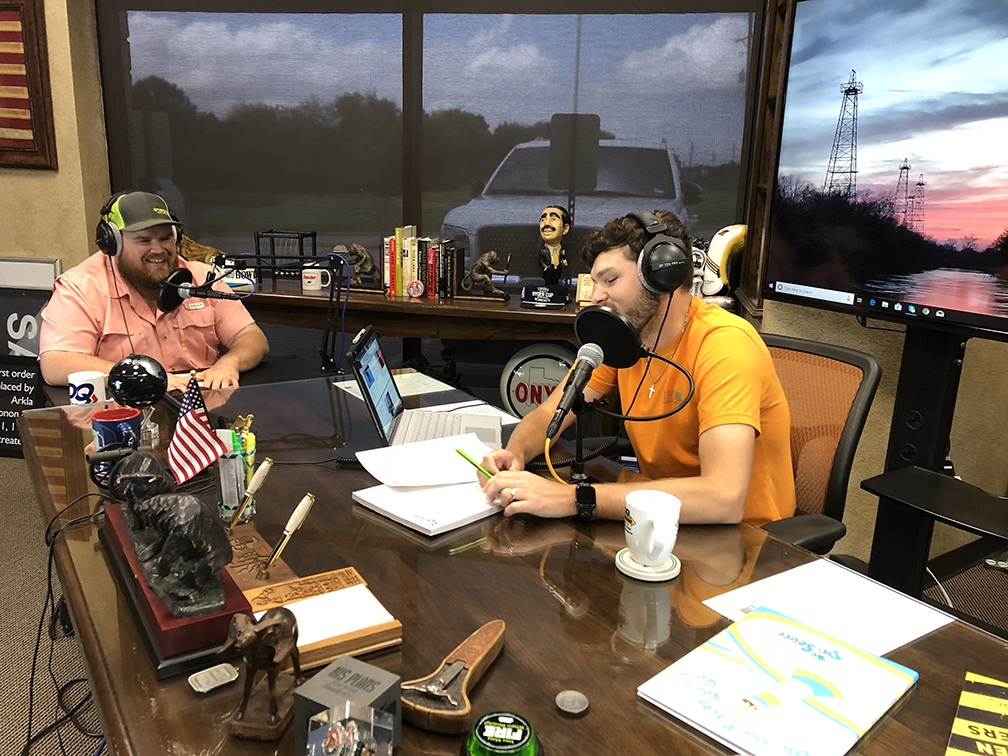
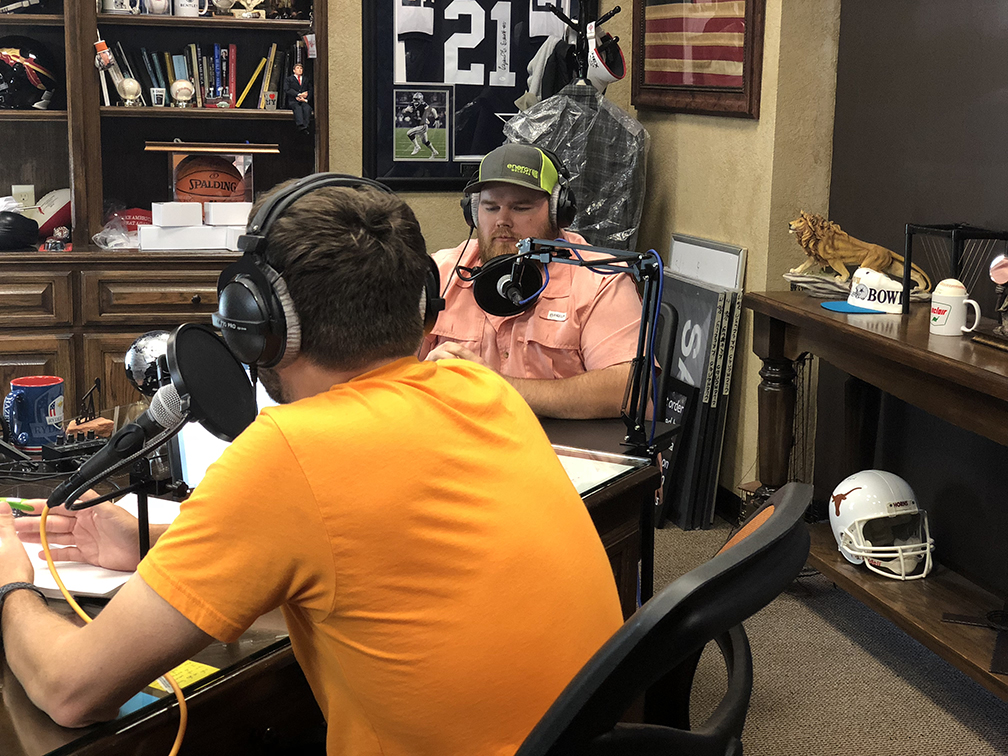
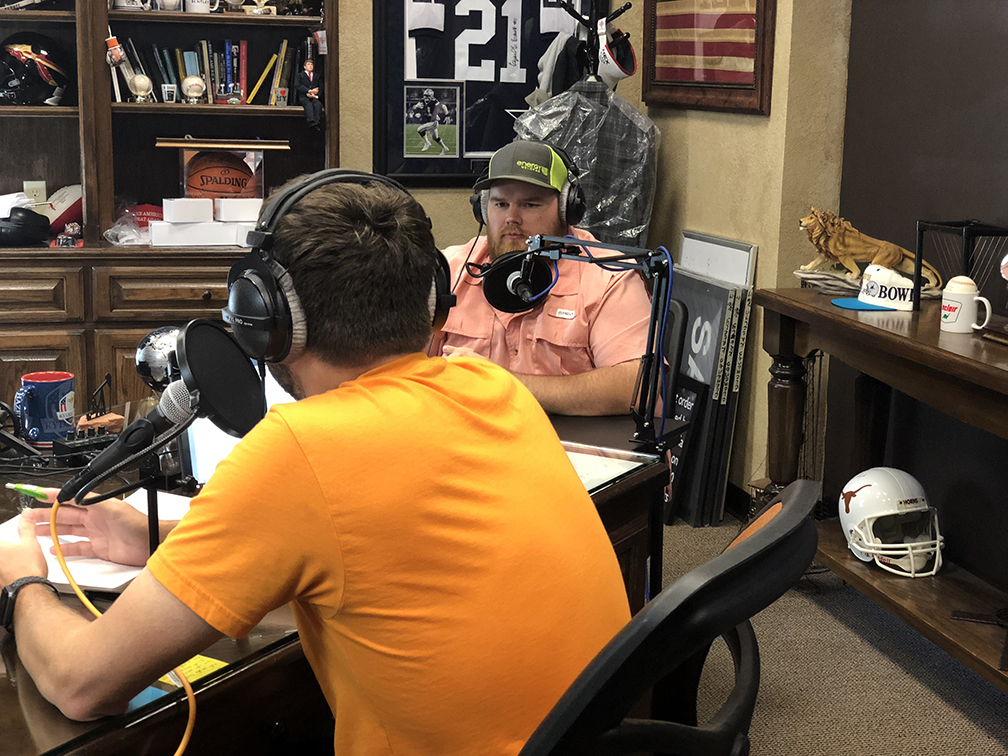
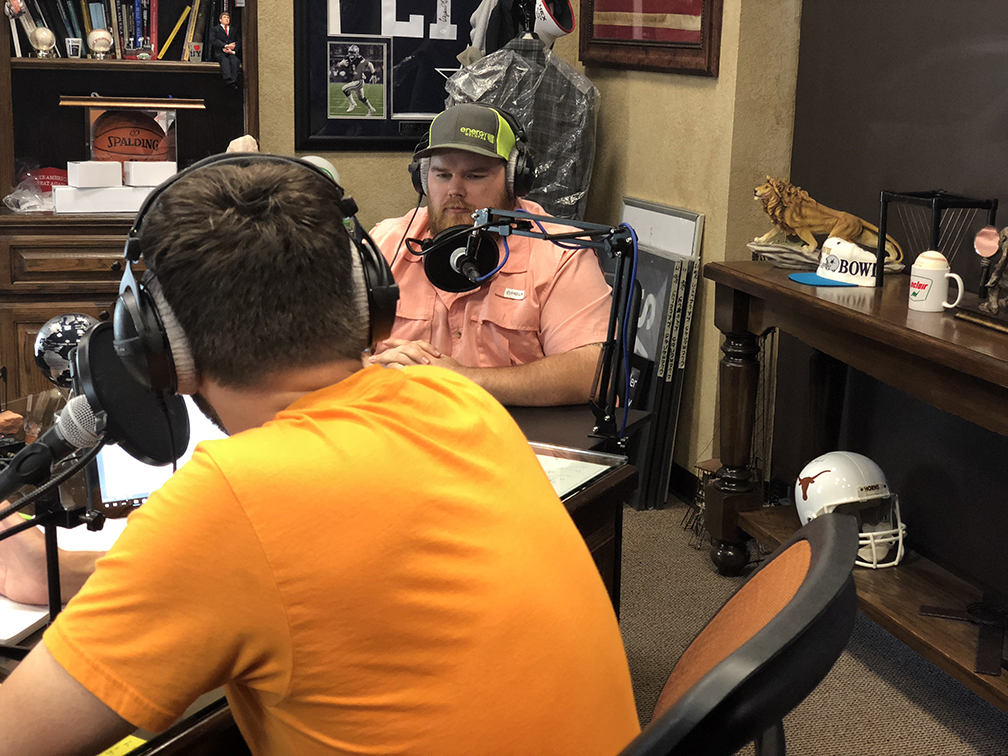



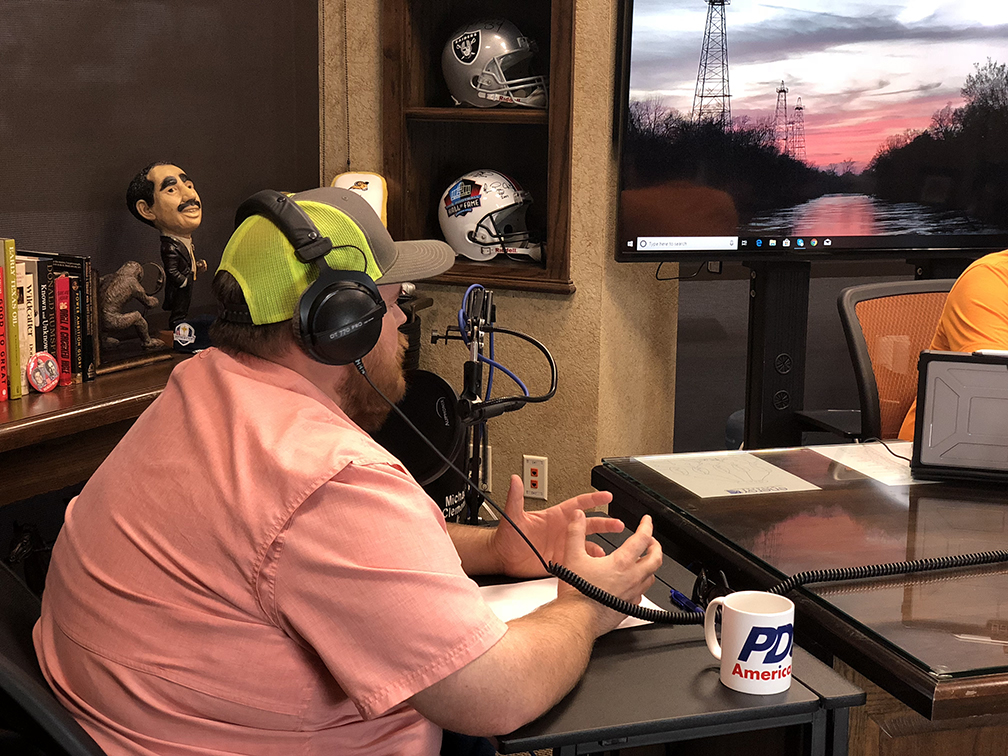

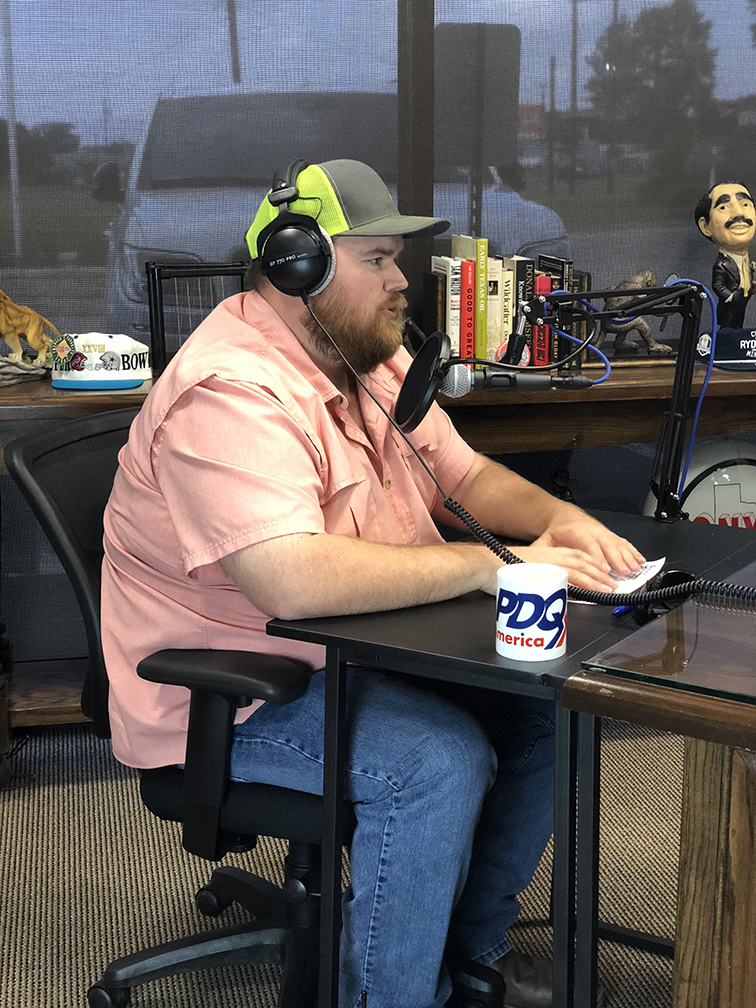
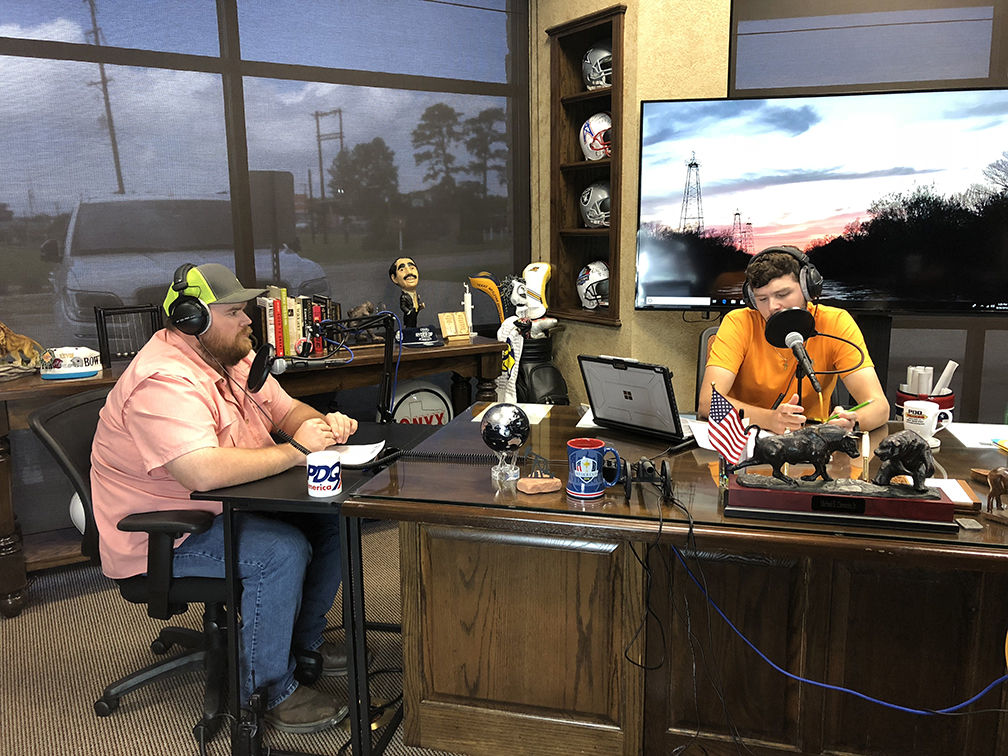

Show Episode Transcript
Manufacturing Leadership
Jacob Palmer – Cold Weather Layers
Welcome to Manufacturing Leadership, a podcast for young professionals in and out of the oil and gas industry. And now here's your host Energy Weldfab's, Michael Clements.
Micahel C.: Hello listeners. Welcome to another episode of Manufacturing Leadership. I'm your host Michael Clements, and we got a wonderful show planned for you today. We've got Energy Weldfab's safety director Jacob Palmer himself here with us, what's up Jacob?
Jacob Palmer: Hey Mike, how are you doing today bud?
Micahel C.: Man I'm doing great, it's wonderful to have you back on the show, and I’m sure our listeners are going to be excited to hear that sweet voice of yours again.
Jacob Palmer: I appreciate you having me back, I always enjoy doing this.
Micahel C.: Well we always have a good time, our producer Gabby has to keep us in order before we get the show started of course every time it takes an additional 20 minutes just to get you and I calm down.
Jacob Palmer: It's all about having a good time man.
Micahel C.: It's all about having a good time. So what we wanted to discuss today was fall and winter clothing, some PPE things, we're going to talk a little bit about layering and then some of the things you just got to be aware of as the seasons are changing here. And I just really wanted to get started off with maybe the most important aspect as it goes from summer to fall; Jacob is it okay to wear white after a Labor Day?
Jacob Palmer: Well I'll tell you what in the shop it doesn't matter because if they're really working they're going to get it dirty anyway, so you can't tell the difference I think it would be okay in the shop.
Micahel C.: You know just your opinion; can you wear white after Labor Day Jacob?
Jacob Palmer: I'm not a fashionista so I don't think I could really comment on that honestly.
Micahel C.: Hey, I like how you deferred that. Anyways we'll get started here, so Jacob we're just going to lead off with a little bit about base layering today, we just want to talk a little bit about torso, legs and feet some different things you can do for base layering. Those of you that are listening to the show, if you're in a different climate just kind of go with what's needed and by the way this is just talking shop between Jacob and I, we're going to be just going back and forth kind of some fall and winter tips.
If you have real questions or if you're looking for some solid answers for your business or for liability purposes seek out other professionals, this is just talking shot back and forth between Jacob and I. This is by no means scientifically proven information, but if this should be good for you to pass along to you and members of your team.
Jacob Palmer: You know in the shop the one thing we stress is making sure that you're comfortable, because if you're not going to be comfortable during the day it causes a ripple effect in how your days going to be. You want to be comfortable and that base layer usually needs to be of a cotton soft material and our facilities, because we deal with welding and cutting and possible fire hazards and you don't want to use any synthetic materials on your body when you're dealing with it, because if it catches on fire it can melt to your body and that can be extremely bad for you.
Because the only way they can get the synthetics that melted to your skin off, is unfortunately with a wire brush. So cotton is the key and being it's a lot material and it's comfortable, because you got to remember as we're going into fall from the summer and in winter from the fall is that pounds equal pain, you want to keep it light, you want to keep it comfortable but you want to keep it effective.
Micahel C.: So light, comfortable and effective?
Jacob Palmer: Effective, yes.
Micahel C.: So that's important about your base layer and Jacob tell us a little bit about maybe some things you may do differ based on your torso, legs, feet you know should you be putting just as many layers on your feet, your legs, your upper body or is that different between different people?
Jacob Palmer: Let's start with the torso first, in the torso you're going to want to wear that cotton shirt, they make good quality thick cotton shirts that's what you're going to want to wear on that base layer, it's going to breathe good, it's going to allow you to sweat but not hold a whole lot of sweat. Then as you move down the leg in our facility you're going to want to wear that a jean type material, they've got a lot of great materials out there now. If our clothing has advanced quite a bit it's more comfortable, it's loose-fitting and then you want to get done into feet.
It's not going to be real important until it gets cold for your feet and it also depends on if you're working in an area where it's wet. If you're going to be somewhere where it's going to be wet you want to be cautious of what kind of socks and stuff you wear, they have some great socks that deter water that keep it off your feet. If you know that you're going to be cold and wet you're going to want to wear a wool sock or something like Thinsulate which is a material they using in a lot of hunting clothing and work wear now. These clothing companies now to find workers and employees as working athletes, so they've really developed new technology to help be more comfortable and protect the employee against but moisture and that heat and the cold.
Micahel C.: For some of our listeners out there if it's a colder area or as it gets colder, can you also look into things like just your basic long johns from Walmart?
Jacob Palmer: Absolutely, they're made usually have of a cotton blend which is safer, but you don't want to use any synthetics I don't want to get any big company names but you know athletic type where that is 100% polyester that wouldn't catch on fire and melt.
Micahel C.: And some other ones you know this is mainly used for skiing and extreme cold, but merino wool is also another good base layer that you can use, cuts down on sweating we'll get into that later in the show. But that is up there definitely with your base layer, you want to stay dry.
Jacob Palmer: That's right, staying dry is a key as we get colder.
Micahel C.: All right Jacob, we've talked a little bit about base let's move on to the mid layer an outer layer, your mid layer we've kind of described some things that could be your base layer / mid layer. If we're talking about outer layer what are some things I guess what type of clothing is that, is that your hoodie, is that your jacket?
Jacob Palmer: You're not going to want to wear a hoodie because most hoodies are made of that synthetic material and out there in a shop if it catches they're going to burn fast and they're going to melt quickly. Being that we're in Texas, we could have 60 degree days, 50 degree days one day but we could be back in the 80s, so important thing when you're picking clothing to wear that day make sure you pick something that you can take off, that you can go back and forth from because in the morning time it may be cold as we get to lunch it's going to get warm and you're probably going to be uncomfortable and you want to take it off, and then as we get around five o'clock and the Sun sets we're going to get cold again.
So you're going to want to be paying attention to how the clothing can be taken off or it can be adjusted for those temperature changes. Now what I recommend for our guys is a canvas Regine style outer layer and they've got lots of jackets and shirts out there that are lined with wool and stuff to help keep you warm while wearing that, and that's what I'm going to tell those guys to wear as far as their upper body. You know wear those heavy shirts, it's not really a need right now for a heavy jacket but we'll get into that. And then as we move down to the legs definitely to go with what we mentioned while ago was long johns, they also have specialty lined jeans and some of the new canvas style pants, and then as we get down to the feet and boots and stuff of course waterproof boots and wool socks, that's where you're going to be able to keep the warmest.
But you always got to remember in Texas the temperature changes, constantly fluctuating so make sure that you think ahead. Another popular clothing item is coveralls because you're in and out of those you just unzip them when you're out and they can be insulated, some coveralls now are FR style that can actually be worked in down in the shop that aren't insulated, you know there's a lot of different varieties that you can use and still be functional.
Michael C.: I really like the part that you said about the outer layer is as its heating up and cooling you want to be strategic on how you order your clothes, so you may not want to wear your t-shirt as your outer most layer because you're going to be taking off stuff. So plan around those breaks, I know we have break around mid-morning and then there's lunch and then a break around mid-afternoon and you usually mid-morning is about when the temperatures we see those start to rise. It'll be 45 degrees in the morning and then by 10 o'clock it's 60 degrees, well you got a prep 4:00 in the morning because we get started here as early as sometimes 5:00 a.m. and so you have a number of hours that you're working in 40 to 50 degree weather and there is a little bit difference in your clothing choices.
So being smart in how you order those clothes I think that's something just really preparation, if it's going to be 45 degrees outside you're probably not going to be wearing long johns in a shop, you probably are going to want to just wear your regular layer with maybe an additional coat or just a shirt or a top that you could take off at lunch or 9:30 at your break, I think that's pretty consistent across most shop facilities that are not central air or central heat.
Jacob Palmer: And it's not just clothing that we need to worry about, you got to think about how the clothing affects you. Once you figured out what you need, you need to figure out if there is a performance type wear because if it's too heavy and it's bulky and you can't function it can cause other safety issues. And you want to be aware of fatigue and restriction, you've still got to have a full length to reach, you still got to be able to take a full step, you don't want anything that might restrict that during your workday because that can create different hazards.
So you're using a cutting torch, well you're in a shirt that restricts your reach, well if you try to reach for a cutting torch or grinder or something you could knock it off, you can bust it up I mean little things that can create havoc in your work area. If you're working around molten metal which we do on a daily basis, and you can't get out of the way or move after you've cut a piece of metal out and it falls, if you can't get out of the way because you've got restricted leg movement you could have something fall on you and then you have to worry about the clothing catching on fire, because even though there is fire retardant clothing it can still catch. And usually when you're wearing those thicker layers, you won't be able to tell if you've got a piece of smoldering metal on those clothing.
Michael C.: So some of just the key points you've hit on here for safety whenever you're layering and for fall/winter clothing is you know just fire safety, sweating, fatigue, restriction to go back on your point of fire safety you know I mean we heat our shops with heaters and so if you get too close to those heaters and you have a synthetic material it will jump.
Jacob Palmer: That's right, that's right.
Michael C.:It will jump out to that material, so you don't have to stick your hand in the fire to get burned.
Jacob Palmer: Yes, you know we take every precaution and we can to protect these guys from getting burned, but they've got to take some initiative to make sure that that's not going to happen to them. You know you preach common sense safety, think about the safety that you need to prepare for and use during the day before you have to use it.
Michael C.: And one thing you want to be aware of is baggy clothing.
Jacob Palmer: That's right, baggy clothing can cause lots of problems in a shop, baggy clothing catches barks and slag and things like that they can catch a clothes on fire. Also we work around grinders, we work around machines that have moving parts those baggy clothes can get caught and it can be deadly if it gets out of control, so we really preach to these guys to wear clothing that fits, make good decisions before you come to work during the winter.
Michael C.: And some notable areas that you want to be sure your clothing is fitting right in is going to be under your bicep, your arm areas, if you have wings poking out whenever you stretch your arms out do you have a lot around your torso just unneeded material there?
Jacob Palmer: You want to make sure the sleeves fit comfortably not too long. Also make sure that if the clothing is starting to have loose spots or strings and things like that, make sure that you take action to get those things fixed before you kind of work because those little tiny strings, those things that can catch on fire that can get caught onto something, just because it's small doesn't mean it can't wreak havoc.
Michael C.: Really good things for managers and leaders that are working in an industrial top setting is to just be aware of the loose articles of clothing, be aware of the material as your team is wearing and like he just said look out for little things like little strings hanging off, baggy jeans maybe jeans that are all ripped at the bottom these are all things that we start to see this time of year.
You know Jacob this is all really good information, you do safety training with all of our workforce out there, this is something they stay on top of, they already have to wear certain clothing for welding. These guys naturally have really good clothing practices, but with just a little bit of training sometimes they can get even better.
Jacob Palmer: And now there's one thing that I want managers and supervisors take opportunities from your safety suppliers like we do, we have a safety supplier that brings out these clothing representatives and they have done a great job in helping us educate our employees on the latest technologies and work wear. Like I said these clothing manufacturers have started referring to employees as working athletes, they want clothing that fit tight and comfortable and the employee gets the most out of his day.
So use those assets from your clothing manufacturers to come out and help educate your employees on the different kinds of clothing they can get, also we've been able to institute a program where we get our employees great discounts not only on clothes they can wear at work, but at clothes and boots and things that they can wear outside. So it's not only boosting our employee’s morale by being able to do that, but it's also educating them and making them safer. One of the big things that the clothing company that we use that they've done is they've made work wear so nice-looking that they can wear it out in public, and what that allows us to do is our employees are wearing work wear all the time. We don't have to worry about them at home, doing the yard, they are wearing good quality clothing everywhere they're at, that's a big help using those safety suppliers and those clothing manufacturers is to get these guys making a habit, quality safety is a habit.
Michael C.: Jacob the last question here, if you work in an industrial setting around flames and stuff like that, how much your hunting gear be worn in the workplace?
Jacob Plamer: Well that's a good question, because hunting gear now is coming in many varieties of fabrics and things. The clothing that you can wear during hunting under your clothing the Thinsulate, the things that help keep you warm those things are great to wear it work, things you don't want to wear to work are the outer layers of your hunting gear because they're usually not rated for an environment where there is exposure to fire and things like that.
Now if your facility does not have to worry about any kind of spark so far, I think that it would be acceptable and of course I always refer to your company's dress code because a lot of people want in a lot of thought and done hazard assessments to determine what kind of clothing you need. But in some situations I don't think you'd be a bad thing, because you spend a lot of money on clothing you want to wear it as much as you can, not just during hunting season.
Michael C.: And last thing here Jacob let's talk a little bit about hats and for the head, you know some of our guys they got to wear welding gear, what encouragement do you have for others whether it's a hat I mean of course hats are fun in the workplace, hats are fine in the shop, but when it comes specifically to cold weather I know that like the knit hats, the beanies and stuff can be synthetic material how do you combat that?
Jacob Palmer: The biggest problem we have is people wanting to wear the beanies, there's such a convenience because it's cold, they keep you warm, they're comfortable but in a workplace like ours they can be very dangerous. They can catch on fire, melt through the back your head, and back your neck so we encourage these guys not to wear them during work hours. I know that it's nice to wear them when they're coming in and going out because it's cold, but we have to wear welding caps, in the areas where they're doing welding and cutting they've got to wear the welding cap.
Michael C.: Yes and just be clear that's for our welders.
Jacob Palmer: We have other areas of the shop where the beanies would be acceptable like kind of hydro department, it's perfectly fine down there because there's not any welding, there's not any cutting down there. But if they walk into a welding area they can't wear them, because it is a danger because grinding sparks things we don't want to take that chance. That's a great question because that's one of those items the welders might see a hydro guy wearing it man I wish I could wear mine and tries to take that chance, well it really runs a big risk to wear a beanie in a welding area.
But you know they make a lot of great canvas and wool lined hats now that are good for welding and being in those type of environments, so I would suggest a manager our supervisor to educate themselves so they can educate their employees better on that. But like I said you got to refer to your safety policy and your dress code on those types of situations.
Michael C.: Jacob I really appreciate you being here today and going over some of this stuff, we've made some awesome points for our listeners out there. If you're interested in this stuff this episode is really just breaking the surface of this, if you have real questions ask a professional if you have questions in regard to this. And really our thing is we just want to raise an awareness and we want leaders to know that some of the things to be looking out for with their workforce, I think some of the ways that we've talked about today to combat this has been wonderful and just some good practices to be in whether you're a leader, manager or the person that's on the shop floor no matter where you're at check the news.
Check the weather and that may be something you don't want to do have a spouse or a family member just kind of be watching the weather for you to be sure hey tomorrow's going to be 60 I know it's been 40 the last three days, just take precaution you can prevent a lot if you just know what the weather's going to be for the next few days. I know that trying to tell the weather here in East Texas it's just like trying to find Waldo but you can prevent a lot if you know what the weather is going to be out here. If there’s no storm coming at least prep for it, maybe it never shows up but at least you were ready.
Jacob Palmer: You know clothing affects a company it doesn't sound like it would affect it, but it affects your safety and it affects the fatigue and how your employees work during the day, so it is an important subject that you've really got to educate yourself on.
Michael C.: Jacob really appreciate your time man, look forward to doing some more shows with you and bringing our listeners other good information as far as PPE and safety goes. Jacob you got any final words for our listeners?
Jacob Palmer: Man I appreciate you having me, the one thing I stress is being proactive not reactive because winter time is going to have an effect on your employees with different types of clothing and the fatigue and how it affects your safety in your shop or in your facility. So please take time, educate yourself and educate your employees.
Micahel C.: Wonderful last words shake that well, once again thank you and we look forward to doing another show with you soon. And thank you to our listeners for tuning in to another show today and I look forward to continue bringing you great material, if you have any questions for us or for Jacob send us an e-mail Podcast@EnergyWeldfab.com we'd love to answer those questions. And if you have any safety questions address those to Jacob and we'll be sure he gets those and we'll get those answers back to you.
Be sure you're following us on Facebook, Instagram, and Twitter. or on all the social networks and then listen to the show rate it, review it, share it whatever you can do with it, just do it. We are looking to just continue adding listeners, we appreciate the ones that we have, you know we just want to continue bringing you great material. I want to say thank you to our host Gabby she's been doing a wonderful job with this and we look forward to bringing more stuff and more good material in the future, I hope everyone has a wonderful day, thanks for listening.
In This Episode
What clothes to wear in the shop during the different seasons.
Information on base layers.
On layering the torso, legs, and feet.
The importance of staying dry as the weather gets colder.
On mid and outer layers.
Putting on your clothes in a strategic order.
Why clothes need to fit properly before you take them into the shop.
How much of your hunting gear can be worn in the workplace.
On hats and headgear.
Takeaways
Not being comfortable in your work clothes causes a ripple effect throughout the day, as Jacob states.
Cotton material is usually the best choice for base layers. Synthetic materials can lead to dangerous situations, especially with fires where the material can melt to your body.
On your torso you want to wear cotton shirts, jeans for the legs, and socks that are water resistant--even some that have ‘thinsulate’. Basic long john’s from Walmart will work well if they’re cotton.
For outer layers, you don’t want to wear a hoodie because many of the materials are synthetic and can melt to your skin. Jacob recommends a canvas or a jean style jacket.
Even fire-retardant clothing can still catch on fire.
Make sure the clothes you wear are not restricting your ability to move in any large way. Also, baggy clothing can get caught in machines and lead to severe injuries.
You don’t want to wear the outer layers of your hunting gear to work. Most of the time the Thinsulate base layers will work out well, but the outer layers of your hunting gear are not made with fire in mind.
Wearing beanies in a shop-like environment like Jacob’s can be dangerous.
Resources
Jacob’s LinkedIn page: https://www.linkedin.com/in/jacob-palmer-6637b38/
Previous episode with Jacob: https://www.energyweldfab.com/podcast-show-list/springsafety
Quotes
“In the shop, the one thing we stress is making sure that your comfortable.”
“Pounds equal pain. You want to keep it light, you want to keep it comfortable, but you want to keep it effective.”
“You gotta think about how the clothing affects you...you want to be aware of fatigue and restriction.”
“Be proactive and not reactive.”
